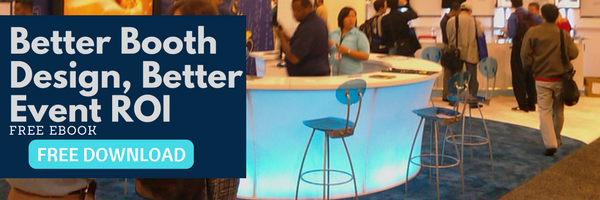At events and trade shows, the amount of business in the sales pipeline is the single most supportive figure that can substantiate success. And more often than not, the amount of potential business is equated to the ROI of the event. But building a significant sales pipeline boils down to a lot more than meeting a large number of customers and exchanging contact information.
In this blog, we look at five things that you need to do to optimize sales and maximize your trade show exhibit efforts.
Qualify early
In many cases, sales reps spend a lot of time on persuading prospects and leads only to find their efforts going to waste because they overlooked certain factors. Qualifying leads early can play a crucial role in streamlining sales efforts. Not only does it serve as an indicator of the likelihood of the deal to go through, but can also tell you if the deal is worth the effort or not.
Needless to say, spending time on a deal that is not likely to yield favorable results can be a futile effort. Therefore, in order to obtain a clear understanding of the situation, sales representatives need to ask pertinent questions and include or eliminate prospects based on their answers. This can also help understand prospects’ requirements and concentrate efforts on deals that are penetrable.
Related: Simple ways to improve lead qualification efforts at events
Keep a clean lead database
The first step in organizing and optimizing your lead generation efforts at events is to maintain a clean database of accessible leads. There are numerous ways to do this. This boils down to removing duplicates, dead leads, irrelevant contact information, and contacts that are constantly treating your emails as spam. Also, be sure to remove companies that you have unsubscribed or have been disqualified.
In short, maintaining a lead database full of redundant contacts is of no use because you will not be able to correspond with them. Keeping hold of a strong core of leads can help you obtain a high percentage of opens and can help you avoid spam traps.
Keep an eye on the funnel
For many companies, events are a primary source of leads and business. At events, the most common occurrence is a crowded top funnel. But as leads progress through the sales cycle, a large number of these leads drop off due to various reasons. The sales funnel at events is a direct indicator of how effective your sales process is.
With the conversion rate in mind, analyzing the funnel can tell you how many leads it takes to reach your sales pipeline goals. In addition to this, keeping an eye on the funnel can tell you where to look for blocks and the reasons behind low lead to opportunity ratios. Once these issues are identified, rectifying them is a matter of rectifying or tweaking sections of the sales process to optimize sales.
Employing a CRM
A CRM is a more of a necessity than a luxury in the event industry today. At the event, sales representatives work overtime to bring in as many leads as possible. Given the number of leads they meet on a daily basis, keeping track of prospects and where they are in the sales cycle can be quite a difficult task. This is why a CRM is essential to the sales process.
But using a CRM isn’t everything here. The smart thing to do is to try and use a CRM in tandem with your meeting management software (I assume you’re using one.) By clubbing these two functions together, the different stages of the sales process work in sync. And because every sales interaction is interlinked, everyone involved with the account is on the same page. This makes it easier to drive the deal to closure. If this is something you’re interested in, you might want to take a look at this ebook.
Follow-up promptly
Prospects seldom remember who you are or what you have to offer once an event concludes. Couple this with the fact that close to 85% of contacts made at events end up in the dark end of an unused database and you learn that a big chunk of effort taken to reach out to prospects has gone to waste. This should tell you the importance of creating a leak-proof follow-up plan that helps you reach prospects soon after the event. A timely follow-up process also ensures that leads are kept warm and your product stays on top of their minds.
The follow-up process should not be limited to an email campaign that is initiated after the event. Personal meetings go a long way in persuading customers through the sales cycle and can go a long way in fuelling the sales pipeline. In order to do this, meeting managers need to identify prospects that are likely to maximize the impact on the sales pipeline in terms of deal size and lead response time.
More often than not, higher management relies on historical numbers to plan the budget and determine if attending in an event is worth the investment or not. A strong sales pipeline can go a long way in giving them a clear picture of the value of investing in events.
If you like this article, you would want to check out our free white paper on ‘Designing Your Booth for a Higher Event ROI’
Click on the link below to download your free copy.



